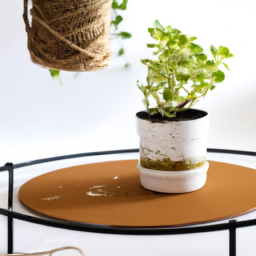
Are you a plant lover looking to expand your knowledge and collection? If so, you’ve come to the right place! In this blog post, we’ll be diving into the wonderful world of plant books. Whether you’re a seasoned gardener or just starting out, there’s something for everyone in the pages of a plant book. Join us as we explore the best resources for learning about different plant species, caring for your indoor jungle, and creating your own botanical paradise. Let’s get started!
Benefits of Keeping a Plant Book for Your Garden
Introduction
As an expert in gardening and plant care, I cannot stress enough the importance of keeping a plant book for your garden. A plant book is a valuable tool that can help you track the growth and health of your plants, as well as plan and organize your garden effectively. In this article, I will discuss the numerous benefits of keeping a plant book and provide you with a step-by-step guide on how to create and maintain one.
Tracking Plant Growth and Health
One of the primary benefits of keeping a plant book is the ability to track the growth and health of your plants over time. By recording important information such as planting dates, watering schedules, fertilization routines, and any pest or disease problems, you can easily monitor the progress of your plants and identify any issues that may arise. This information can help you make informed decisions about how to care for your plants and ensure they thrive in your garden.
In addition to tracking basic care information, a plant book can also be used to record more detailed observations about your plants, such as changes in leaf color or size, the appearance of flowers or fruits, and any unusual growth patterns. By keeping detailed notes and photographs in your plant book, you can create a comprehensive record of each plant’s development and better understand its unique needs and preferences.
Furthermore, a plant book can be a valuable tool for diagnosing and treating plant problems. By documenting any signs of pest infestations, diseases, or nutrient deficiencies in your plant book, you can quickly identify the issue and take appropriate action to remedy it. This proactive approach to plant care can help prevent problems from spreading to other plants in your garden and ultimately save you time and money in the long run.
Planning and Organizing Your Garden
Another important benefit of keeping a plant book is the ability to plan and organize your garden effectively. By recording the layout of your garden, including the location of each plant, as well as its size, shape, and growth habits, you can create a visual map that helps you design and maintain a harmonious and aesthetically pleasing garden space. This information can also help you make informed decisions about plant placement, spacing, and companion planting to maximize the health and productivity of your garden.
In addition to helping you design your garden layout, a plant book can also serve as a valuable resource for planning future plantings and seasonal maintenance tasks. By keeping a record of when each plant was planted, pruned, or fertilized, as well as any changes in its growth or health, you can create a planting calendar that outlines the specific care needs of each plant throughout the year. This calendar can help you stay organized and on track with your garden maintenance tasks, ensuring that your plants receive the care they need to thrive.
Furthermore, a plant book can be a useful tool for tracking the success of different plant varieties in your garden. By recording information such as plant performance, yield, and flavor, you can identify which plants are thriving in your garden and which may need to be replaced or relocated. This data-driven approach to garden planning can help you make informed decisions about which plants to grow in the future and how to optimize your garden for maximum productivity and enjoyment.
In conclusion, keeping a plant book is a valuable practice for any gardener looking to improve their plant care skills and create a successful and beautiful garden space. By tracking plant growth and health, planning and organizing your garden, and diagnosing and treating plant problems, a plant book can help you become a more knowledgeable and effective gardener. So grab a notebook and pen, head out to your garden, and start documenting the wonderful world of plants today!

How to Create and Maintain a Plant Book for Proper Plant Care
Introduction
Creating and maintaining a plant book is a great way to keep track of your plants and ensure they receive the proper care they need to thrive. Whether you are a beginner or an experienced plant parent, having a plant book can help you stay organized and informed about your plant collection. In this guide, we will walk you through the steps of creating and maintaining a plant book for optimal plant care.
Step 1: Choosing the Right Notebook
The first step in creating a plant book is to choose the right notebook or journal to record your plant information. You can opt for a traditional paper notebook or go digital with a plant care app. Whichever option you choose, make sure it is easy to use and has enough space to write down all the necessary details about your plants.
When selecting a notebook, consider factors such as size, durability, and organization. Look for a notebook that is small enough to carry around with you but large enough to write detailed notes. Choose a durable notebook that can withstand frequent use and storage. Additionally, consider how you want to organize your plant information – whether by plant type, care routine, or other categories.
Once you have chosen the right notebook, you are ready to start creating your plant book.
Step 2: Recording Plant Information
The next step in creating a plant book is to record essential information about your plants. This includes details such as the plant’s name, species, origin, and care requirements. You can also include additional information such as the date of purchase, growth milestones, and any special care instructions.
When recording plant information, be sure to include details that will help you track your plant’s progress and provide the best care possible. Take note of the plant’s preferred lighting conditions, watering schedule, humidity levels, and temperature requirements. You can also include photos of your plants to document their growth and development over time.
In addition to basic plant information, consider adding personal notes and observations to your plant book. This could include details about your plant’s behavior, any issues or challenges you have encountered, and your overall experience caring for the plant. Keeping detailed records will help you learn from your past experiences and improve your plant care skills.
Step 3: Maintaining Your Plant Book
Once you have created your plant book and recorded all the necessary information, it is essential to maintain it regularly. Make it a habit to update your plant book regularly with new information, such as growth changes, repotting dates, and any adjustments to your plant care routine. This will ensure that your plant book remains accurate and up-to-date.
In addition to updating your plant book, use it as a reference guide for caring for your plants. Refer to your plant book when you have questions about a plant’s care requirements or need to troubleshoot any issues. Your plant book can serve as a valuable resource for keeping track of your plants’ needs and ensuring they receive the proper care they need to thrive.
By following these steps and maintaining a plant book, you can stay organized, informed, and proactive in caring for your plants. Whether you are a beginner or an experienced plant parent, a plant book can help you cultivate a healthy and thriving plant collection. Start creating your plant book today and watch your plants flourish with proper care and attention.

The Importance of Recording Plant Information in Your Plant Book
Why Should You Record Plant Information?
When it comes to gardening, keeping track of plant information in a plant book is essential for several reasons. Firstly, it helps you keep a record of the plants you have in your garden, including their names, species, and specific care requirements. This information can be invaluable when it comes to planning your garden layout, ensuring that each plant is placed in the right spot to thrive.
Secondly, recording plant information allows you to track the growth and development of your plants over time. By documenting when you planted each plant, how it has grown, and any changes in its appearance or health, you can identify patterns and trends that may help you better understand how to care for your plants in the future.
Finally, keeping a plant book can serve as a valuable reference tool. Whether you are looking for information on a specific plant, trying to troubleshoot a problem in your garden, or simply seeking inspiration for new plant combinations, having a comprehensive record of your plants can be incredibly helpful.
In short, recording plant information in your plant book is a simple yet powerful way to improve your gardening skills, enhance your enjoyment of your garden, and create a valuable resource for future reference.
What Information Should You Record?
When it comes to recording plant information in your plant book, there are several key pieces of information that you should include. Firstly, be sure to note the name and species of each plant, as well as any specific cultivar or variety information. This will help you easily identify each plant and ensure that you are providing the right care for its specific needs.
Next, record the date that you planted each plant, as well as any subsequent care or maintenance tasks that you perform, such as watering, fertilizing, pruning, or repotting. Keeping track of these details will help you establish a routine for caring for your plants and ensure that you are meeting their needs consistently.
Additionally, be sure to document any changes in your plants’ growth or health, such as new leaves, flowers, or fruit, as well as any signs of pests, diseases, or other issues. This information can help you identify problems early and take action to address them before they become more serious.
Overall, the more detailed and accurate your plant information is, the more useful it will be as a reference tool and a guide for caring for your plants effectively.
How Can You Organize Your Plant Book?
When it comes to organizing your plant book, there are several approaches you can take. One option is to create a separate section for each plant, with detailed information on its name, species, planting date, care requirements, and any other relevant details. This can help you easily find information on specific plants and track their progress over time.
Another approach is to organize your plant book by garden area, grouping together plants that are located in the same bed, border, or container. This can help you plan and visualize your garden layout more effectively and ensure that you are providing the right care for each group of plants.
Alternatively, you could organize your plant book by plant type, grouping together all of your flowers, vegetables, herbs, or other plants in separate sections. This can help you compare and contrast different types of plants and identify common care requirements or issues that may arise.
Ultimately, the best way to organize your plant book is the one that works best for you and helps you easily access and use the information you have recorded. Experiment with different approaches until you find the one that suits your needs and preferences.
In conclusion, recording plant information in your plant book is a simple yet powerful tool for improving your gardening skills, enhancing your enjoyment of your garden, and creating a valuable reference for future use. By documenting key details about your plants, organizing them effectively, and using the information to inform your care routine, you can take your gardening to the next level and create a thriving, beautiful garden that brings you joy for years to come.
Crisp Recap
Have you ever heard of a plant book? No, it’s not a book made out of plants, but rather a book that helps you identify and learn about different plant species. Plant books are a great resource for both beginner and experienced gardeners, as they provide detailed information on plant care, propagation, and identification.
Whether you’re looking to start your own garden or just want to learn more about the plants in your backyard, a plant book can be a valuable tool. With beautiful illustrations and easy-to-understand descriptions, these books make it easy to identify and care for a wide variety of plants. So next time you’re at the bookstore or browsing online, consider picking up a plant book to expand your knowledge and enhance your gardening skills.
Your Questions Answered. Comprehensive FAQ:
Q1. What is a plant book?
A plant book is a comprehensive guide that provides information about different types of plants, including their characteristics, care instructions, and uses. It can help you identify plants, learn how to care for them, and discover new species to add to your garden.
Q2. How can a plant book help me with my gardening?
A plant book can be a valuable resource for gardeners of all levels. It can help you identify plants in your garden, learn about their specific care requirements, and troubleshoot any issues you may be having with your plants. Additionally, a plant book can inspire you to try new plants and design ideas in your garden.
Q3. Are there different types of plant books available?
Yes, there are many different types of plant books available, catering to various interests and skill levels. Some plant books focus on specific types of plants, such as flowers, succulents, or trees, while others provide a general overview of a wide range of plant species. There are also plant books that focus on specific gardening techniques, such as container gardening or landscaping.
Q4. How do I choose the right plant book for me?
When choosing a plant book, consider your level of gardening experience, the types of plants you are interested in, and the specific information you are looking for. If you are a beginner, you may want to start with a general plant book that covers a wide range of species. If you have more experience, you may prefer a plant book that focuses on a specific type of plant or gardening technique.
Q5. Where can I find plant books to purchase?
Plant books can be found at bookstores, garden centers, and online retailers. You can also check out your local library for plant books to borrow. Additionally, many gardening websites and forums offer recommendations for plant books based on specific interests and needs.

Lisa Chen is a seasoned indoor gardening expert and the author of several bestselling books on the topic. With a background in horticulture and urban farming, Lisa is dedicated to helping urban dwellers embrace the joys of cultivating green spaces indoors. Her detailed guides and hands-on tips empower readers to transform their living spaces into thriving plant sanctuaries.


